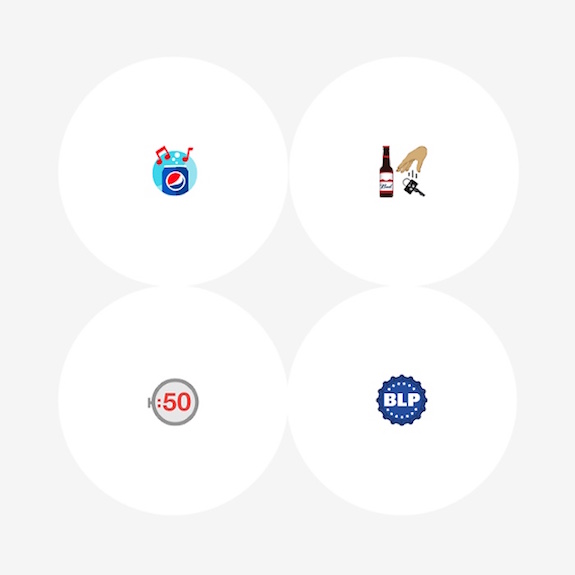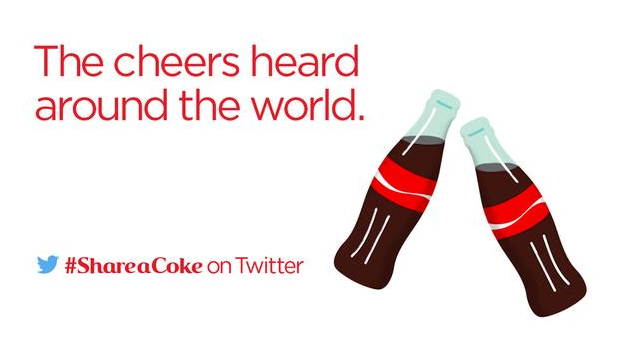Death of an Ad Man: The $1M Super Bowl Emojis
Welcome to Death of an Ad Man, where we celebrate the industry Stephen Leacock once described as “a judicious mixture of flattery and threats.”
Despite my admitted ineptitude when it comes to using them in day-to-day life, I find the recent simplification evolution of our language into GIFs and emojis absolutely fascinating. In the span of only a few years, these new languages without words have quickly and ubiquitously infiltrated almost every conceivable medium and industry, from comedy, to sports, to politics.
And you can expect to see a few new ones invading your Twitter feeds this Super Bowl Sunday…

Since October, Twitter has designed 17 custom emojis.
While the original few batches were created solely for big events like the new Star Wars film# or the equally-important new music video for Taylor Swift’s “Bad Blood,”#, it wasn’t long before Coca-Cola, the brand of brands, unveiled their #ShareACoke campaign, fancy new custom emoji and all…

In an interview last September with TechCrunch’s Drew Olanoff, senior director of global brand strategy at Twitter Ross Hoffman explained the move, appropriately, with a hashtag:
One of our core values at Twitter is #ShipIt. We want to test things and Coca-Cola was the right partner to test with here. We have established trust over the years and we are excited about the learnings we will get from this initiative.
The data we get back will help determine the future on what we do with this as a product.
Well it looks like that future is now, as Twitter has already since worked with other big-time advertisers like Starbucks# and Dove# to create custom Twitter emojis, and the week leading up to today’s big game saw the launch of Super Bowl-related custom emoji campaigns from the likes of Pepsi, Verizon, and Anheuser-Busch.
Pepsi’s custom emoji is a can of soda with music notes floating out that automatically pops up whenever someone tweets #PepsiHalftime# (the throw-shit-at-a-wall result of Pepsi’s strategy to put 40% of its Super Bowl campaign dollars towards digital), while Verizon’s is a stopwatch with “:50” on it# – a nod to some giveaway/promotion they’re doing that honestly seems overly complicated.
Anheuser-Busch, on the other hand, went two completely different directions with their custom emojis; one is a responsible-drinking hand letting go of some car keys# to support their #GiveADamn campaign and the other is a blue circle with a white “BLP” on it#, which is meant to highlight their “Bud Light Party” campaign featuring Amy Schumer and Seth Rogen:
https://www.youtube.com/watch?v=JohgwbpQuy8
Silly as these may seem, the real kicker, however, is that according to Adweek, all of these careful arrangements of pixels come with a hefty “seven-figure” price tag attached.
Nevertheless, before you go crazy that we’re talking about tens of thousands of dollars a pixel with these Super Bowl emojis – not to mention the fact that these custom-emoji deals are all parts of ad packages that also involve Promoted Trends (which normally cost $200,000), Promoted Moments and Promoted Tweets – remember what advertisements, at their root, are psychologically built to do.
Megan Garber at The Atlantic puts it nicely:
The advertisers here aren’t paying seven figures for tiny images of beverages and Storm Troopers; what they’re paying for, really, is the cachet of newness and hipness. They’re paying for the ability—the potential — to surprise and amuse and delight people.
They’re paying for what advertisers are always trying to purchase, in the end: fickle human attention.
In 1995, to the amazement and awe of multiple industries, the average price for a 30-second Super Bowl ad buy finally reached $1 million. This year, a 30-second spot will cost you 5x that amount. But as the television commercial becomes more and more obsolete, even in in the death throes of more and more live sports and award shows, the real action is taking place on a different platform entirely – in real time, too.
Let’s just see if Twitter can survive long enough to cash in…
Submitted To Death of an Ad Man, Emojis, Twitter
Like what you read? Share it.
(That helps us.)
Love what you read? Patronize Bryce Rudow.
That helps us and the writer.
What is Patronizing? Learn more here.

